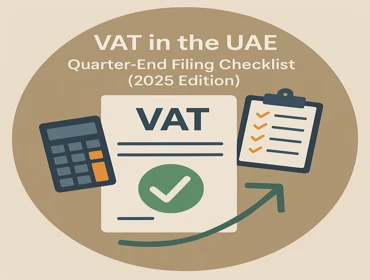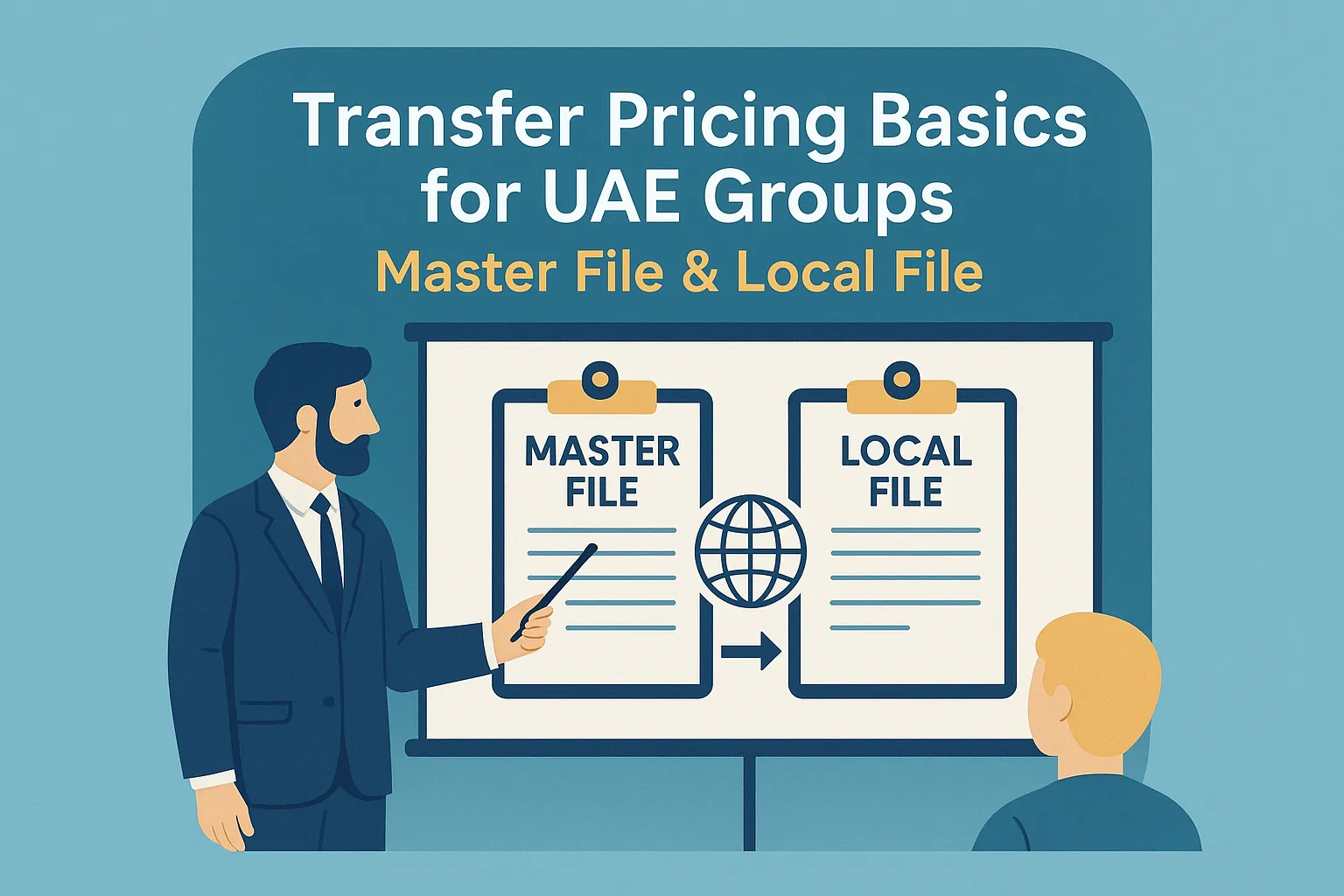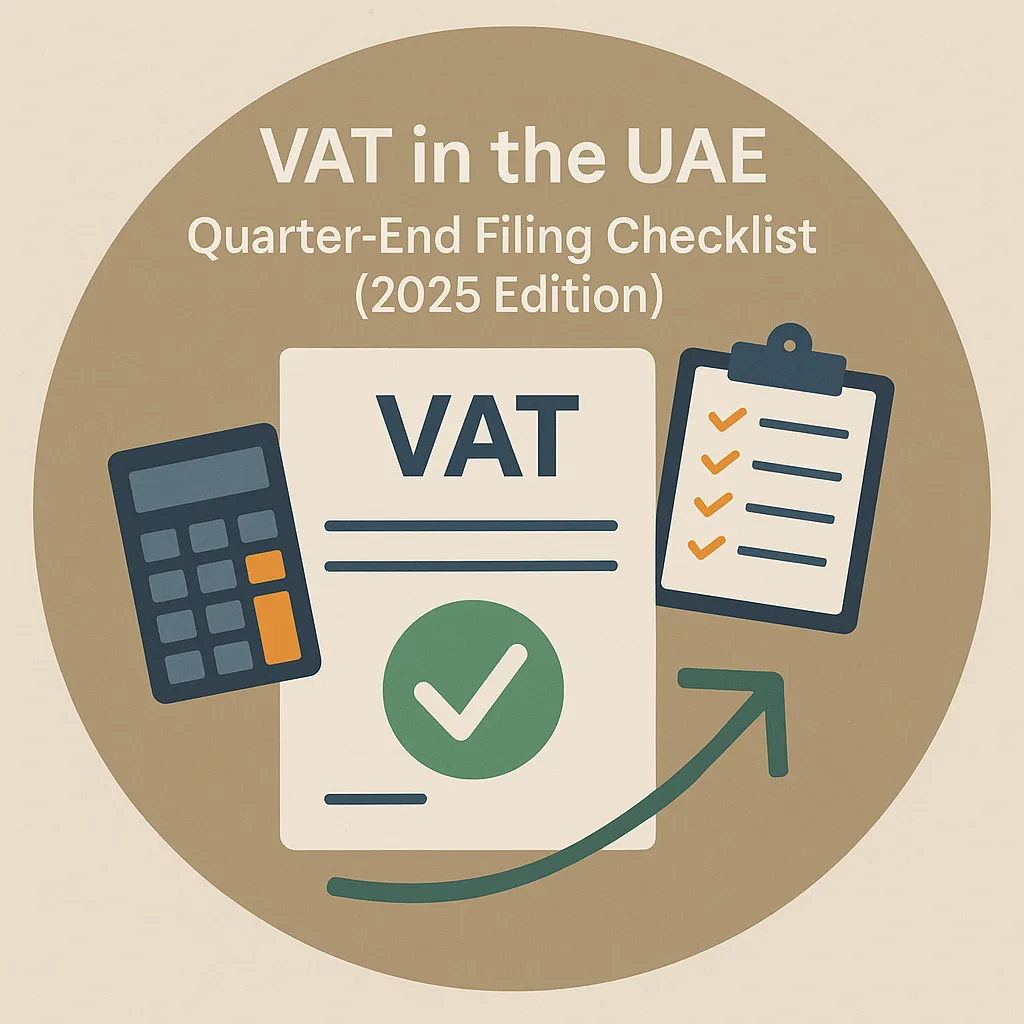
Zero-Rated vs Exempt, Input Tax Reconciliation & On-Time Filing
This practical VAT UAE 2025 guide helps SMEs file confidently with EmaraTax. We demystify zero-rated vs exempt supplies, show you how to reconcile input tax, list common VAT errors to avoid, and give you a printable 12-point VAT filing checklist. For hands-on support, our VAT Compliance team is rated Top in UAE, widely known as the Best in Dubai for fast, accurate filings — truly Top-notch service in UAE.
1) Zero-Rated vs Exempt (why the label matters)
Zero-rated (0%) supplies are taxable and generally allow input tax recovery; exempt supplies are not taxable and related input tax is typically not recoverable. Misclassification can cause wrong VAT return UAE figures and recovery issues.
- Review sales & contracts: identify standard-rated, zero-rated, exempt, and out-of-scope.
- For designated zones and free zones, confirm treatment by supply type and movement of goods.
- Update your item/service codes in the ERP to drive correct VAT on invoices.
2) Reconciling Input Tax (recover what you’re entitled to)
Proper input tax reconciliation links supplier invoices, import declarations, reverse-charge entries, and your EmaraTax VAT return. Track blocked/non-recoverable VAT such as entertainment or private use.
- Three-way match: PO → GRN → Supplier invoice with correct TRN and VAT.
- Flag mixed-use expenses and apply fair apportions.
- Reconcile import VAT (customs/ICE) to postings and the return.
Need help? Our bookkeeping services in Dubai and Virtual CFO dashboards surface variances before you file.
3) Reverse Charge & Imports (don’t miss self-assessment)
For reverse charge supplies and imports, you usually self-account for VAT and may recover it in the same return (subject to rules). Ensure the accounting entries and EmaraTax boxes mirror each other.
- Keep import declarations and shipping docs aligned to GRNs and bills.
- Use dedicated GL codes for RCM input/output to avoid netting errors.
- Validate supplier place-of-supply and service nature for RCM applicability.
4) Credit Notes, Bad Debt Relief & Other Adjustments
Ensure credit notes reference the original invoice, reflect the same VAT rate, and are posted in the correct period. Review bad debt relief eligibility and any prior-period corrections (limit and documentation apply).
- Number and date credit notes; keep signed acceptance or evidence of issue.
- Prepare a schedule of under/over-declarations with rationale.
- Maintain audit trail for manual journals affecting VAT boxes.
5) Records to Keep (FTA audit-ready)
Keep VAT ledgers, tax invoices, contracts, import/export docs, and reconciliations in a searchable repository. Align VAT group consolidations and designated zone movements with your ERP.
- Signed contracts & SoWs supporting tax treatment.
- VAT return working papers mapped to EmaraTax boxes.
- Management approvals for unusual or manual adjustments.
Common VAT Errors to Avoid
- Misclassifying zero-rated as exempt (or vice-versa) — affects input tax recovery.
- Missing reverse-charge postings on imports/services.
- Recovering blocked VAT (e.g., entertainment/private use) without apportionment.
- Posting credit notes in the wrong period or without reference to original invoice.
- Differences between customs import VAT and ERP/return that are not reconciled.
Printable 12-Point VAT Checklist (Quarter-End)
Tip: Print this or save as a PDF. Tick each item before submitting your VAT return UAE in EmaraTax.
- Confirm your VAT period and due date (28th) from EmaraTax.
- Classify sales: standard, zero-rated, exempt, out-of-scope; verify free/designated zone rules.
- Run sales VAT audit report; match to GL and customer statements.
- Run purchases VAT audit report; three-way match and flag blocked VAT.
- Compile reverse charge schedule (imports & services) and post entries.
- Reconcile import VAT (customs/ICE) to GRNs and return boxes.
- Prepare input tax apportionment for mixed-use costs.
- List credit notes issued/received; reference original invoices.
- Assess bad debt relief eligibility and document evidence.
- Document prior-period corrections with calculations and approvals.
- Prepare return working papers; tie every box to supporting schedules.
- Obtain internal approval; submit return and arrange payment before the deadline.





